Tom Kepler's Blog, page 4
June 3, 2021
My Canceled WordPress.com Blog Misadventure
 It all started when Blogger's Feedburner "Follow by Email" was scheduled to be shut down. I needed a new email subscriber service, so I decided to move to WordPress.com, with their Premium $96 a year plan. Boy, was that a mistake!
It all started when Blogger's Feedburner "Follow by Email" was scheduled to be shut down. I needed a new email subscriber service, so I decided to move to WordPress.com, with their Premium $96 a year plan. Boy, was that a mistake!I had been at Blogger with my Green Goddess Glamping camping blog for three years. I've had this Tom Kepler Writing blog at Blogger for over ten years. The composing process is pretty easy, what used to be called a WYSIWYG site, a "wizzy-wig" or What You See Is What You Get set-up. Pretty easy to use. The WordPress Premium level platform did have some more options, along with a learning curve--but I felt all was within my capacity.
Then I imported my three years of blog posts from Blogger and discovered that everywhere that I had used an single quote or double quote, the text came out including a backslash, such as can/'t instead of can't, or /"Follow by Email/" instead of "Follow by Email." I like the WordPress online chat service for problems, but didn't like the news I received. When I reported that I had written over 250 articles in three years and all the articles included this problem--and also page titles--I was told the Premium plan could not help me--I could go to the $300 a year plan, though! The "Happiness Engineer" chat comments are below.
By manually removing them, WordPress will display the titles, content, etc without the backslash character. I don't think there is an automatic way of doing this on the Premium plan but let me double-check for a moment.
Another idea that will work is creating a local version of your site, using search/replace plugin on the local site to clean up the unnecessary characters, then import or do a search and replace on that setup, export that site and import it here.
I have to admit that after researching online and finding out that this issue has been around for over ten years and that WordPress.com hasn't found a fix for this for the $96 per year plan (or the free, entry-level plan, for that matter), that pretty much tripped my trigger.
I researched my original problem of finding a new "follow by email" service and found that Mailchimp has a great platform for free (with under 500 subscribers). I activated that service for this blog and then decided to move back to Blogger with my Green Goddess Glamping blog.
In all fairness, I imagine the $300 a year option for WordPress.com is wonderful. For my little one-person blogs, though, I don't want to pay that amount for each, not when there is another way to go. WordPress.com is probably a good way to go if you're starting a blog out from scratch. Importing, though? Beware!
 #mc_embed_signup{background:#fff; clear:left; font:14px Helvetica,Arial,sans-serif; } /* Add your own Mailchimp form style overrides in your site stylesheet or in this style block. We recommend moving this block and the preceding CSS link to the HEAD of your HTML file. */ Subscribe--Follow by Email* indicates required Email Address * First Name Last Name (function($) {window.fnames = new Array(); window.ftypes = new Array();fnames[0]='EMAIL';ftypes[0]='email';fnames[1]='FNAME';ftypes[1]='text';fnames[2]='LNAME';ftypes[2]='text';fnames[3]='ADDRESS';ftypes[3]='address';fnames[4]='PHONE';ftypes[4]='phone';fnames[5]='BIRTHDAY';ftypes[5]='birthday';}(jQuery));var $mcj = jQuery.noConflict(true);
#mc_embed_signup{background:#fff; clear:left; font:14px Helvetica,Arial,sans-serif; } /* Add your own Mailchimp form style overrides in your site stylesheet or in this style block. We recommend moving this block and the preceding CSS link to the HEAD of your HTML file. */ Subscribe--Follow by Email* indicates required Email Address * First Name Last Name (function($) {window.fnames = new Array(); window.ftypes = new Array();fnames[0]='EMAIL';ftypes[0]='email';fnames[1]='FNAME';ftypes[1]='text';fnames[2]='LNAME';ftypes[2]='text';fnames[3]='ADDRESS';ftypes[3]='address';fnames[4]='PHONE';ftypes[4]='phone';fnames[5]='BIRTHDAY';ftypes[5]='birthday';}(jQuery));var $mcj = jQuery.noConflict(true);

May 12, 2021
Anna Lee Huber Historical Mysteries: Her Wily Characterizations
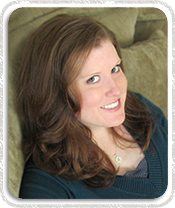 I enjoy writing about what I'm currently reading, and my current binge will probably rate several blog posts over time. I've been reading what one blogger at Book Riot has described as "feminist historical mysteries." I've taken each of those three words and analyzed them in the context of what I've been reading, and have gained some new insights.
I enjoy writing about what I'm currently reading, and my current binge will probably rate several blog posts over time. I've been reading what one blogger at Book Riot has described as "feminist historical mysteries." I've taken each of those three words and analyzed them in the context of what I've been reading, and have gained some new insights.Over the winter I began gathering books from our local public library for my wife's reading. Why didn't she do so herself? Well, I'm retired and she's still working, the library was closed for browsing (only curbside pick-up) which meant browsing was relegated to online catalog search, and I enjoy browsing (whether online or eyeballing the shelves). I also like to do nice things for my wife. What I discovered in my browsing is that there is an entire sub-genre out there of women mysteries. This is nothing new for me to discover, of course. After all, Agatha Christie is one of the best-selling novelists of all time, and she wrote stories that included not only male detective Hercule Poirot but also strong female sleuths. One BBC writer affirmed that Christie "fought Victorian literary conventions, which saw women painted as frivolous and focused on men, to bring the public gutsy females with great minds," listing four heroines that made Christie "an unlikely feminist icon."
What my wife and I have been noticing and appreciating in our current reading is that "feminist historical mysteries" include some very good reads. Anna Lee Huber is one writer who is currently publishing intelligent, adept mysteries that include strong female protagonists.
Why attach the word "feminist" to her books? Huber is publishing two mystery series, the Lady Darby mysteries, set in the early 1800s, and the Verity Kent series of mysteries, set in the World War I era. Both women protagonists are intelligent "inquiry agents," yet also have to work within a melieu that severely defines and restricts the "appropriate" behavior of women. These women protagonists also are paired with love and work partners who are more open to having equal relationships with women. The result of Huber's characterizations is that not only are the gender limitations of past eras seen but the challenges that face our current times are also illustrated. I like, though, how Huber characterizes the success of the couples as being based in mutual respect and honesty. The main characters are developed in a balanced manner so that gender depictions don't skew into stereotypes.
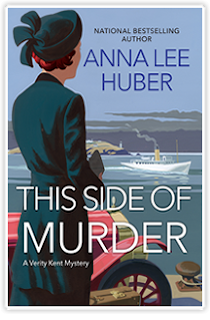 These are historical novels, and Huber does capture the essence of the time and place. Her descriptions of castles on the moor or descriptions of the streets of London feel authentic, as do her details of the fashion of each era, whether in clothes or architecture. I especially appreciate, though, how Huber is not heavy-handed in her inclusion of historical detail and relevant background information. Such detail is assiduously woven into the narrative so that its inclusion doesn't interrupt the flow of the action. In the Verity Kent series, I found myself stepping into the WWI era in a manner that I hadn't before, feeling the overpowering stress of the trenches on the war front and also the stress of wives and families back in England, hoping against hope that the boy on the red bicycle doesn't arrive at their door with a telegram from the war office.
These are historical novels, and Huber does capture the essence of the time and place. Her descriptions of castles on the moor or descriptions of the streets of London feel authentic, as do her details of the fashion of each era, whether in clothes or architecture. I especially appreciate, though, how Huber is not heavy-handed in her inclusion of historical detail and relevant background information. Such detail is assiduously woven into the narrative so that its inclusion doesn't interrupt the flow of the action. In the Verity Kent series, I found myself stepping into the WWI era in a manner that I hadn't before, feeling the overpowering stress of the trenches on the war front and also the stress of wives and families back in England, hoping against hope that the boy on the red bicycle doesn't arrive at their door with a telegram from the war office. Huber applies the "mystery" of these feminist historical mysteries with a deft hand. The clues arrive with due diligence, and the suspects are sufficient to keep us guessing. I honestly didn't know who the real culprit was in many of the novels until the very last few pages. As each series progresses, the protagonists become more skilled in their inquiry skills; in addition, the working relationship between the protagonists and their partners deepens. This provides not only the satisfaction of following the trail of bread crumbs the sleuths have to follow but also the engaging in the increasing richness of the relationships as they evolve. The Verity Kent series also adds the mystery "pearl" of a Moriarty-like character to the series. Just as Sherlock Holmes and Watson had their arch-villain rival in Moriarty, so Verity and Sidney Kent have their evil plotter--who shall remain unnamed to avoid spoiling the fun of discovery.
One standard I use to determine an author's skill is whether or not that author is able to credibly develop characters, no matter what gender. Do those characters seem real? Do they come alive on the page? The ability to create believable and relatable characters is one of Anna Lee Huber's strengths as a writer. I've come to realize she's just one of many women writers who have tapped into the interest in "feminist historical fiction." Huber and other writers tap into that fascination by readers that Mark Twain tapped into with his novel A Connecticut Yankee in King Author's Court. Beyond Twain's satire is just the simple allure of a character displaced in time with special knowledge and abilities. Huber has created her women protagonists to have skills, abilities, and predilections that are more modern than the times in which her stories are set. The struggles of these characters--and their partners--to find fulfillment in their lives are not so different than our own (except possibly multiplied by an "x" factor), and that is one secret of Huber's success as a mystery novelist. Because we want to prevail, we want her wily main characters to prevail. If they can do it, then maybe so can we.

May 3, 2021
The Joy of Spring Gardening
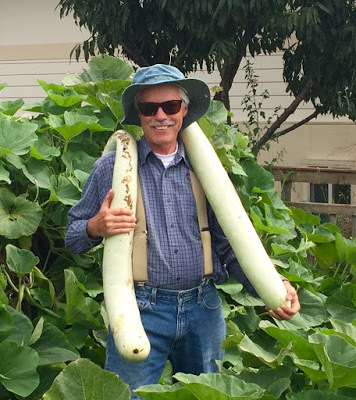 Chives, arugula, radishes, kale, cilantro, and asparagus. The spring garden is beginning to produce, but that "produce" isn't just the vegetables my wife and I eat, even though our fresh food is a substantial part of what we gain.
Chives, arugula, radishes, kale, cilantro, and asparagus. The spring garden is beginning to produce, but that "produce" isn't just the vegetables my wife and I eat, even though our fresh food is a substantial part of what we gain.The first positive gain each year from our garden is just getting outside into the fresh air and open sky. After a long year inside, being outside is uplifting, and physical tasks in that fresh air are invigorating to the system even when there is some fatigue. Even when "getting outside" means being in our mini-greenhouse, there is still the smell of fresh soil, the warmer temperatures, and the promise of what is to come at a later date outside.
Every spring brings for me a sense of renewal--and it's not symbolic but actual. The earth thaws and can be worked. The soil is ready for planting and watering. The physical activity and the participation in the spring cycle of the seasons is like jumping on a streetcar. We are moved along with the plants; we are uplifted, physically, emotionally, and spiritually. By engaging in the process of planting and nurturing the seedlings, we enliven within ourselves that same dynamism that drives the plants from the seed--stem and leaves to the sky, roots deep into the soil. As poet Dylan Thomas wrote: "The force that through the green fuse drives the flower / Drives my green age; that blasts the roots of trees / Is my destroyer." Beyond and deeper than mind and intellect, we are one with nature.
We cannot minimize the simple act of working the earth, though. And it is work, getting our hands dirty in order to get the soil ready for a new season. There is an inertia to the cold, dark, sleeping months of winter that working in the garden can dissipate. For every sore muscle and blister, there is the inspiration of the seeds and of sap uprising that calls us to get the job done, to not miss the planting time, and once the seed is in the ground and the garden plot watered, I find it impossible to not lean on the rake and admire the beauty of sun warming the soil, the joy of handing the job over to nature, to sun and rain and soil.
The garden can be a mandala, circles within circles, cycles within cycles. To attune ourselves to the grammar of our garden is to learn the language of nature, to discover within the simple syntax of the garden the cosmic song of life. We have to be receptive, though, and to pay attention. If we give ourselves to our garden, our garden will give us back ourselves. We are the sun and rain and earth and wind--and the underlying unity from which all the elements arise. I am never alone in the garden but share a common bond, breathe the common air, knowing in my bones that there is nothing common about the miracle of spring and the sweet fragrance of peach blossoms blowing across the awakened earth. We are bees in flight. Let us do our work, according to our true nature; let us find the nectar in the flower and celebrate our time on this beautiful earth.

April 24, 2021
A Covid Parable, a Parallel Tale
 I'm calling this a parable or a tale, but this is actually a true story. It's the correspondences, the connections which make this story resonate beyond its simple premise.
I'm calling this a parable or a tale, but this is actually a true story. It's the correspondences, the connections which make this story resonate beyond its simple premise.My neighbor for many years was an elder lady who lived by herself. Her husband had passed away long ago, and her daughter was old enough to be a great-grandmother. Margaret was almost ninety years old when she told me this story. Still living independently and driving her car herself, my son and I enjoyed her quiet, steady, unflappable approach to life. Come winter, we would always shovel her sidewalk and driveway for her. Come spring, Margaret always gave me some fresh rhubarb from her backyard for rhubarb coffee cake.
Margaret had driven a car for so long that her driving experience pre-dated the use of seatbelts. Those vintage autos just didn't have seatbelts--and don't even think about airbags.
"For a long time," Margaret told me one day, "I didn't wear seatbelts, even after cars started coming out with them. It wasn't that I didn't believe in them. I'd known people who had been thrown through windshields in a wreck."
The question I asked, of course, was if she knew that seatbelts were effective, then why hadn't she used them . . . and why did she use them now?
"It wasn't that I didn't believe in seatbelts," Margaret said. "It was just this one thing that kept me from buckling up. You see, I was afraid that if I was in a crash, my seatbelt would get stuck, and I would be trapped and die in a fire. I was afraid of burning up in a car fire. That would be such a terrible way to die, and it has happened to people, you know."
"So what changed your mind?" I asked.
"It was just time, really," Margaret said. "More and more people used seatbelts. More and more information and facts came out about seatbelts and how they made you safer. Eventually, I realized that there was no doubt that seatbelts saved many people from dying from automobile accidents. I couldn't argue that."
She said, "I thought about my fear of dying by fire, trapped in a car, and I realized that was a possibility. It did happen. I also came to realize, though, that many, many people died in car crashes. You could almost call it a common occurrence. Being in a car crash, the seatbelt sticking, and then having the car catch on fire and you dying in the fire--now, that was a very rare happening, a very small part of the deaths from car wrecks. I just came to realize that it was much more likely that I'd die in a regular crash than from a fiery crash that I couldn't escape because of my seatbelt. I just had to face my fear and choose the safest course."
Margaret chose the safest course of action, the safer of two possibilities--seatbelt or no seatbelt. She chose to wear a seatbelt while driving. "It took a while for me to be comfortable wearing that seatbelt," she said. "I knew I was safer, though, and that got me past my fear."
Additional Information"How Is the COVID-19 Vaccine Like a Seatbelt?"--from the Northeast Georgia Health System blog
"Experts Talk Normalcy After Second Dose of the COVID-19 Vaccine"--8CBS News Show, Las Vegas

April 19, 2021
My Local Public Library Has Only Curbside Service--How I Learned to Browse Online
 Ever since I could read, one of my favorite pastimes has been reading, and closely associated with that has been the happy pursuit of browsing for something interesting to read. With the arrival of the current coronavirus pandemic, businesses and governmental agencies have adapted to the necessary medical protocols, our friendly public library among them. Reducing its service to online catalog book checkout and curbside delivery is the current service available to my town's bibliophiles.
Ever since I could read, one of my favorite pastimes has been reading, and closely associated with that has been the happy pursuit of browsing for something interesting to read. With the arrival of the current coronavirus pandemic, businesses and governmental agencies have adapted to the necessary medical protocols, our friendly public library among them. Reducing its service to online catalog book checkout and curbside delivery is the current service available to my town's bibliophiles. The library has had an online catalog for a long time, one which I used occasionally to determine if a particular book or author was available at the library. Almost always, however, I used the in-library computers for a quick search. "Does the library have Edgar Rice Burroughs' Tarzan of the Apes," I'd ask myself, for instance, and a quick check of the computerized "card catalog" would determine the availability of the novel--assuming that I just didn't walk over to the "B" section in fiction and do an eyeball check myself.
I had never actually browsed with the catalog, though, and that is something I learned to do with the advent of the pandemic. First I had to flounder around a bit and remember my sign in and password. Having done that, I then had to learn how to use the catalog's search functions. I discovered that I could look for more than a specific title or author. I could reference also according to subject, for instance adding the search words "ocean," "historical," and "women." I could also search for books that were part of a series.
A fun activity I began with my wife was to find books for her to read. I had done this some prior to the pandemic, cruising the stacks and pulling a few books I thought she'd like. Now I had to learn how to do this via the computer catalog. My wife was raised by the ocean, which she misses here in Iowa, so that has always been a "go-to" subject for books. She also enjoys novels with strong female protagonists, although gender is not a deal-breaker. Finally, we've discovered that we both enjoy mysteries and detective novels.
In addition to the library, we have also come to rely on online book buying, both used and new books. We've also utilized my Kindle a bit for ebooks when necessary, although we still enjoy reading hands-on paper books more. The process that has evolved is that I discover an author--and perhaps a series by that author--and then browse the library catalog to determine if the library has that author's books. Then we'll fill in any books missing from a series or from that author's backlist by purchasing online.
One good example of this process is books by the author Anna Lee Huber. The library catalog displayed as a new book A Pretty Deceit, the fourth book in Huber's Verity Kent mystery series. I researched the author and discovered she also writes a Lady Darby mystery series. I bought the first books in both series as samplers. My wife and I both enjoyed them, and we have purchased and read the series, which included our reading only one of the books from the library.
Searching for novels that have ocean settings, I discovered the novels of Mary Alice Monroe. My wife has really enjoyed her novels, and we've been able to check out a number of her novels from the library, filling in as needed by online purchases. Monroe has a number of stand-alone novels and also has written books for two series, a Lowcountry Summer trilogy and the Beach House series. My wife's read all her novels, and although I've read only one of these novels, I'll probably read more in the future.
I enjoy searching for possible books for my wife Sandy, and it's great fun to discover an author that she really enjoys. Because I'm retired and she's still running her business, it's easier for me to carve out some browsing time. Besides, as a lifelong reader, a writer, and a retired language arts teacher, it's great fun to browse the stacks, even if I have to do it virtually. It has also been a source of enjoyment for Sandy and me to read the same books and then to talk about them. Sharing our enjoyment of reading is a simple joy, which is especially pleasurable in our sometimes complicated world. We have tried a few authors that we aren't crazy about, but even those discussions are a source of pleasure and sharing.
If you haven't interacted with your local library's online catalog, I suggest you try it out. I think my town's public library has done a great job of dealing with the dangers of the pandemic while still working to meet the needs of its patrons. Curbside service--actually, I'm feeling a bit spoiled!

April 14, 2021
Getting the COVID-19 Vaccination to Help My Family
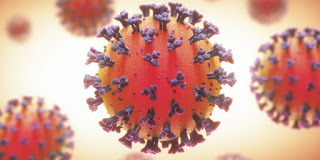 Being vaccinated for the COVID-19 virus was a decision I made for my personal health. When the vaccinations first came out, there was some concern because the vetting process was fast-tracked because of the pandemic dangers. However, my 'older-than-65' group was not the first to receive the vaccinations, and when my group hit the front of the line a couple months into the vaccination process, I had read enough to convince myself that the risks assessed to the covid shot were exponentially less than the risks of the actual virus, especially since I was not frail in health, with pre-existing health issues, or with a history of allergic reactions.
Being vaccinated for the COVID-19 virus was a decision I made for my personal health. When the vaccinations first came out, there was some concern because the vetting process was fast-tracked because of the pandemic dangers. However, my 'older-than-65' group was not the first to receive the vaccinations, and when my group hit the front of the line a couple months into the vaccination process, I had read enough to convince myself that the risks assessed to the covid shot were exponentially less than the risks of the actual virus, especially since I was not frail in health, with pre-existing health issues, or with a history of allergic reactions. I remember one open-letter I read that used the numbers 1/250 and 1/250,000 when assessing the relative risks of the virus and the vaccination. That is to say, using an analogy, if you were borrowing a car to drive to a town an hour away, which car would you borrow--the car with one chance in 250 to break down, or the one with one chance in a quarter million? I also remember one doctor commenting on "speculation regarding possible negative side effects" by simply stating that the speculation provided no scientific evidence that such concerns were viable. Personally, for me, the real dangers of the virus out-weighed the fears that there might be something out there about the vaccinations that we don't know about, especially after millions have received successful vaccinations.
I looked at the research, the speculation, the objective results, listened to the experts, considered the empirical data--and then signed up. The "signing up" for me was early enough in the game that some real research and footwork was required, due to the lack of a centralized sign-up system and a central information source. I didn't just receive my vaccination for myself, though, and not just society's health. I also received my vaccination for my family. I am the first in my family to receive a covid vaccination. I think that's a significant event. At one point there was the consideration of what would happen if our children became sick and were hospitalized with the virus. Who would take care of the kids or grandkids? Now that I am vaccinated, I can for the sake of my family take advantage of my vaccination and care for my family by myself if necessary. I would follow the protocols but would also have an over 90 percent effectiveness rate for not catching the virus, and an almost 100% effectiveness of lesser severity if I were to get sick. Yes, there are the variants, but my vaccination certainly does not increase my risk of infection by a variant strain of the coronavirus. I have, so to speak, one more layer of protection for myself than the rest of my family.
My point is that I'm situated to provide assistance to my family until others are immunized. Science indicates that it would be safer for me to tend to family members exposed to the virus than for those who are not yet immunized, should someone be hospitalized or immobilized. I find that personally comforting. Now that my parents have passed, I don't have to worry about traveling long distances to care for them, which would be more difficult if I weren't immunized, especially if they had been vaccinated and I had not--or even if they had not been vaccinated, since they were very frail in their last years. My life has become focused on our family of twelve who all live in the same town.
I can focus on my family here at home. My physiology can be the family's rampart to keep danger at bay, if necessary. There are always dangers, but I've done what I can to keep everyone safe. That's why, in fact, I researched and made sure I was vaccinated as early as I could for my age group. I hustled and put myself at the front of my family, at the front of the line. I don't just see my immunization as a protection for me; I also see it as a weapon that I can use against the virus to defend my family. It's a strange world in which prudence makes me powerful.

Enter your email address:
Delivered by FeedBurner

April 7, 2021
Going Fishing with My Brother
 Spring in my hometown
Spring in my hometown"You know what I'd really like to do, Tom?" my brother asked me over the phone a few months ago. "I'd like to go fishing with you."
I could imagine it, sitting in patio chairs on the shoreline of the Lake Oroville afterbay, lines in the water and an afternoon of relaxing ahead of us. We wouldn't be following the flow of a Sierra Nevada stream like we did in the old days, fishing downstream from hole to hole with worms, salmon eggs, or helgramites--or perhaps wet fly fishing if we were in the mood. My brother's time for that is past; he probably would be using his walker to safely negotiate the uneven terrain of the shoreline, and his energy level would be just about right for the springtime Mediterranean climate of California's Central Valley.
If it were spring like now, the valley's wildflowers would be in bloom, the grass green, the sky a handsome blue, and the temperatures mild. My brother Pat wanted to share that experience with me, and just thinking about it makes me smile. It's a sweet and happy wish, a simple desire of just sharing a moment together, just an uncluttered moment together in nature. There would be robins, of course, and probably a few bumblebees. There would be the grasses moved in waves by the invisible hands of the wind. There would be the warmth of the sun and all the time in the world, for that is what fishing teaches us--to be right there in the moment, without regrets or anticipation, self-sufficient in the clove of time.
My birthday is in February and my brother's is in March--Groundhog's Day and St. Patrick's Day, if you can believe the chances of that. Pat called me on my most recent birthday, wishing me well and saying that he'd be heading to the hospital for a blood transfusion due to a low blood cell count. I still have the message on my phone. He headed out after my birthday for the transfusion, came home, and in less than a week after his call had died during an afternoon nap. As I've had too many opportunities to say these last years, although it wasn't unexpected, it was still a surprise.
Pat's health wasn't well. After a life of hard work in carpentry and a hard life of drinking and smoking, he'd cleaned up his life these last three years, finding the means to live a simple, stable life. I'm proud of the way he faced his challenges, made the right decisions, and turned his life around. He managed to die after having finally found his inner worth and dignity.
Pat and I were different. He was the itinerant construction worker and carpenter; I was the school teacher who could tell you what my schedule was a year in advance. We would get frustrated with one another, our habits of life and mind being different. Beyond all differences, though, we always maintained our acceptance of one another as brothers. At some point, we just stepped beyond our differences to that unity of family. We were loyal to one another. We might have yelled at one another occasionally, but we never gave up on one another. We gave one another the space we needed, but we did that without ever losing our connection.
 Me, Mom, and Pat, 2017
Me, Mom, and Pat, 2017My brother died two months ago, and I think I'm just starting to get myself straightened out. It hit me harder than I would have supposed. Maybe it's an older brother thing, but I've always felt a responsibility for him. How do you protect someone, though, from the cycle of life? I honor my brother's life. He was a kind and gentle soul, who mostly just wanted to be left alone so that he could enjoy the simple things in life. I think he understood the deep truth of the world--that life is essentially happy in nature, as long as you didn't interfere too much and screw it up.
It's spring--a time for fishing and camping, a time of beginning. The pines are pungent with pollen, and the thunderclouds smell of rain. My brother wanted to go fishing with me one last time, and I feel like he's just started that fishing trip ahead of me. He always told me that he thought he'd die first. Pat's talk of fishing was his way of sharing his perspective with me, I think. Pure fishing transcends time by being so completely in the moment. I somehow can feel my brother's happiness, his contentment, and that in my mind I'm sitting next to him, feeling the same warm sunshine. Neither time nor distance separates us--just two souls fishing, our lines wet in the water, just two brothers gone fishing, the moment perfect and eternal.

January 2, 2021
Netflix's Bridgerton--a First Impression

My wife and I enjoyed Shonda Rhimes' TV show "Scandal," and especially how the show stuck a thumb in the eye of racial bigotry. To discover that a Black man was secretly running the United States for years while all those old white men thought they were calling the shots! And how the Black puppeteer chortles when he confesses all to those assembled old men, daring them to tell the world! Intrigued that Rhimes has produced "Bridgerton," a British Regency era series about early 1800s high society, my wife and I were ready to find out how the producer's outrageous unpredictability would play out, whether Rhimes' thumb in the eye could make it past Britain's stiff upper lip, so to speak.
After viewing the first episode of the series, we are pleased to say that the production has met our expectations--and exceeded them. Yes, the thumb is still there, ready to poke--and as usual it's coated in Rhimes' rich syrup of witty, intelligent grandeur.
First, let's talk about the setting and costumes--this is a lush production. Having seen just the first episode, there's nothing gritty about the show. The rich are very rich, and the lives they lead are excessive and indulgent, fueled by big bucks. Starting 2021 with the beauty of the sets . . . and fireworks and gushing fountains and garden topiary--well, that's a welcome escape from 2020.

Next, the writing is quite deft, matching the fast-moving and insightful plotting and dialogue we enjoyed with "Scandal." The love matches and lack of them, the rich, smirking buffoons and the entitled and unaware young men just needing a nudge to get "woke," and the women who really run the show, some well and some not so well--it's all there, a naughtier, more lavish, and romantically suspenseful version of "Pride and Prejudice."

Finally, any consideration of "Bridgerton" cannot exclude Rhimes' casting of people of color liberally into British Regency aristocratic society--not only casting in excessive proportion to historical fact but also scripting the storyline so that no racial prejudicial reactions exist. That was a bold move by Rhimes, and I think it works by both allowing the fantasy to exist and by also making a point by the startling contrast with historical reality. Show writer Chris Van Dusen (in The Oprah Magazine) stated that the show was not intended to be historically accurate but rather "a modern take on a period drama that resulted in fantasy." An Ed Times piece puts it this way: "The tone and attire of the show also remind us of the fact that we may have left behind the enduring whiteness of authors like Jane Austen. Call it a recreation of history or escapist fantasy, the show does represent change and also opens a lot of avenues for other similar possible dramas in the future." I find the inclusion of people of color beyond the historical accuracy of the times is indeed an invigorating "fantasy." It's a subtle, silky poke in the eye, a thumb in the ugly eye of bigotry. Perhaps a Black James Bond is possible.
We're looking forward to more of "Bridgerton," to more romance, intrigue, and period escapism. After seeing the first episode, one of our favorite (or should I say favourite?) characters is plump Penelope Featherington. "Pen" is also an ill-matched character for Regency society--according to those standards, an overweight bookworm who is too quick to display her dazzlingly radiant smile. In the first episode, Penelope is the focus of the snarky bigotry of the times, becoming the perfect foil to the ignored racial bigotries that the fantasy side-steps. Expecting racial tension, we discover a smart, joyful young woman who will probably get along because of her fortitude and despite the prejudices of the times. Well done! And we look forward to more to more ribbons, bows, and knowing Rhimes, probably daggers--real, metaphorical . . . or both. We'll see, won't we!

Enter your email address:
Delivered by FeedBurner

November 20, 2020
Why the Holidays Are So Dangerous During This Pandemic
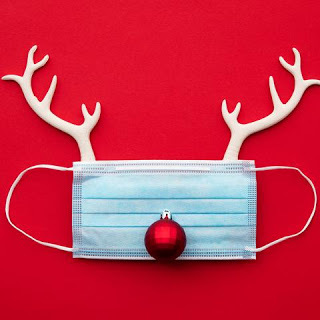 Remember the early days of the pandemic? The danger of getting COVID-19 was defined as geographic--"hotspots" such as major cities and travel centers. Don't go to those places was the advice, and it was good advice. Then the advice was to not go to "super-spreader" events such as sports or entertainment events because the odds were that some individuals in those events would be sick and would infect others. This was and is still also good advice.
Remember the early days of the pandemic? The danger of getting COVID-19 was defined as geographic--"hotspots" such as major cities and travel centers. Don't go to those places was the advice, and it was good advice. Then the advice was to not go to "super-spreader" events such as sports or entertainment events because the odds were that some individuals in those events would be sick and would infect others. This was and is still also good advice. Associated with super-spreader events were gathering spots such as bars, where alcohol consumption and a lot of social interaction created ripe circumstances for virus transmission. Included in this "gathering spot" designation were also weddings and religious gatherings. Time has allowed for enough empirical data to be gathered to verify that there are places we should avoid in order to be safe, and although the news is filled with blatant examples of people not following the advice of medical professionals, the truth is that many people are following the advice of the medical profession--they are not traveling out of their local area, they are wearing masks in public, and they are not frequenting public watering holes such as pubs.
We're getting pretty good at taking precautions--and I use the pronoun "we" deliberately. We have been careful and are careful. We are even aware of "covid fatigue" and are watching our behavior in order not to let down. The environment has changed, though, and even though I don't want to write these words, the pandemic environment is now more dangerous. Why?
The virus is now everywhere. To say "I'm avoiding hotspots, super-spreader events, and public gathering spots, so I'm safe" is not true. From the least populated to highly populated locations, all are getting hammered.The main cause of spread is from asymptomatic individuals. The main cause of infection is through the air, and with colder weather, more people are spending more time inside.Pandemic fatigue is real and insidious . . . and the holidays are upon us.Fact-gathering now indicates that the most likely way someone will be infected with this novel coronavirus is by a family member who is contagious, asymptomatic, and who conscientiously continues the cautious behavior of past months and unknowingly passes the virus on to a family member. Let me phrase this another way--that asymptomatic carrier just might be you . . . or me.Extended family celebrations during the upcoming Thanksgiving season, the seasonal religious holidays, and New Year's celebrations are now considered high risk activities this winter season, where families will be sharing food and time together . . . and COVID-19. That's the main concern of medical professionals, and why they are asking families to cancel or amend holiday get-togethers. We have to be careful that we don't love ourselves to death. If we can get through this winter, hopefully next spring and summer will be safer.
Have a central meeting place, such as a family member's porch. Swap pies and main dishes. Then go home and eat alone or with the family members you live with. Wear masks, keep your distance, wash your hands. Or meet and chat, wearing masks and being careful. Then go home to eat. Eating together at the family table, not wearing masks--this is now considered one of the highest level risks for being infected with this virus. The best advice is old advice from early in this pandemic. Assume you are asymptomatic and have the active virus. Would you go to a family get-together and not wear a mask?
Here are two links to useful articles about how to plan a safe holiday celebration:
The Possibility of Happy Holidays During a PandemicHow to Celebrate the Holidays During the Pandemic
Enter your email address:
Delivered by FeedBurner

October 25, 2020
A Peach Pie to Celebrate a Wedding Anniversary
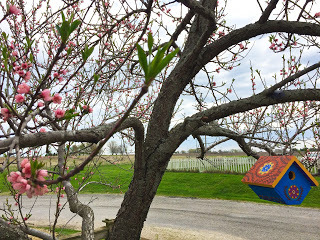 Blossoming peach with wren house at spring
Blossoming peach with wren house at springToday is the sixteenth anniversary of Sandy and my marriage. At the beginning of our marriage when we bought our home, on our first spring together we planted a peach tree in the southeast corner of our lot, replacing a crabapple that hadn't survived the winter. That tree is now sixteen years old, a grand old age for a grafted semi-dwarf fruit tree, and its limbs are propped up by two supporting poles, its profile over the years grown more gnarled and wind-sculptured. But it still grows delicious fruit, and this year was a year of high production.
The website Gardenia describes the Reliance peach tree as follows: "Noted for its cold-hardiness, Prunus persica 'Reliance' is a vigorous and fast-growing peach tree adorned with profuse soft pink blossoms in early-mid spring. They are followed by a heavy crop of medium-sized, freestone, red-blushed yellow fruits in mid-late summer. The soft yellow flesh has a good flavor."
This spring our peach tree was spared from late frosts, so an abundance of blossoms led to an abundance of fruit set and harvest. Usually harvest follows a pattern. First I pick early maturing fruit that we eat for breakfast, added to muesli or yogurt. Then as more fruit matures, we begin a one- or two-week cycle of baking peach cobblers or peach crisps three or four times a week. It's hard to imagine, even for me who has lived the reality, but after a couple of weeks of frequent crisps and cobblers, we get a little tired of the bounty. Then I begin harvesting a bowl of peaches every morning, cutting them up, and then freezing them in around six-cup batches for peach pies. At the end of this season, I had put aside enough peaches for six pies.
Last week, Sandy and I talked about our wedding anniversary. "Don't get me a card or gift," she said. "I just want to do something together."
"How about we bake a peach pie?"
"Oh! I'd forgotten about the peaches! Perfect!"
The peaches thawed to a generous, delicious portion just right for a deep dish pie. Sandy used a beautiful etched, clear-glass pie plate given to us by my mother, and the pie was probably the best-tasting peach pie I've ever eaten, the flavors full yet subtle and the crust light and flaky. Of course, it wasn't just how the pie tasted; it was also how Sandy and I spent our time together, how we shared this experience over an entire year of enjoying and caring for our peach tree.
It's a temptation to make a big symbolic gesture with that pie regarding our marriage: pure, nurturing, a product of shared values and energy. I'll keep it simple, though. It's a good pie, and it's a good marriage. In these times of challenge, I'm looking forward to baking one home-grown peach pie a month to help us get through the winter.

Enter your email address:
Delivered by FeedBurner




